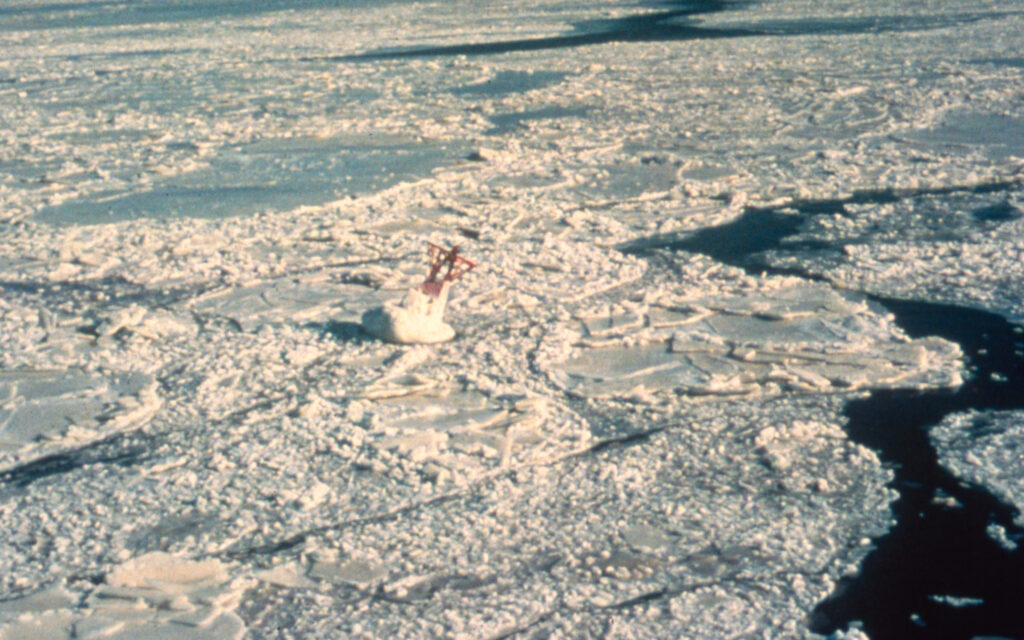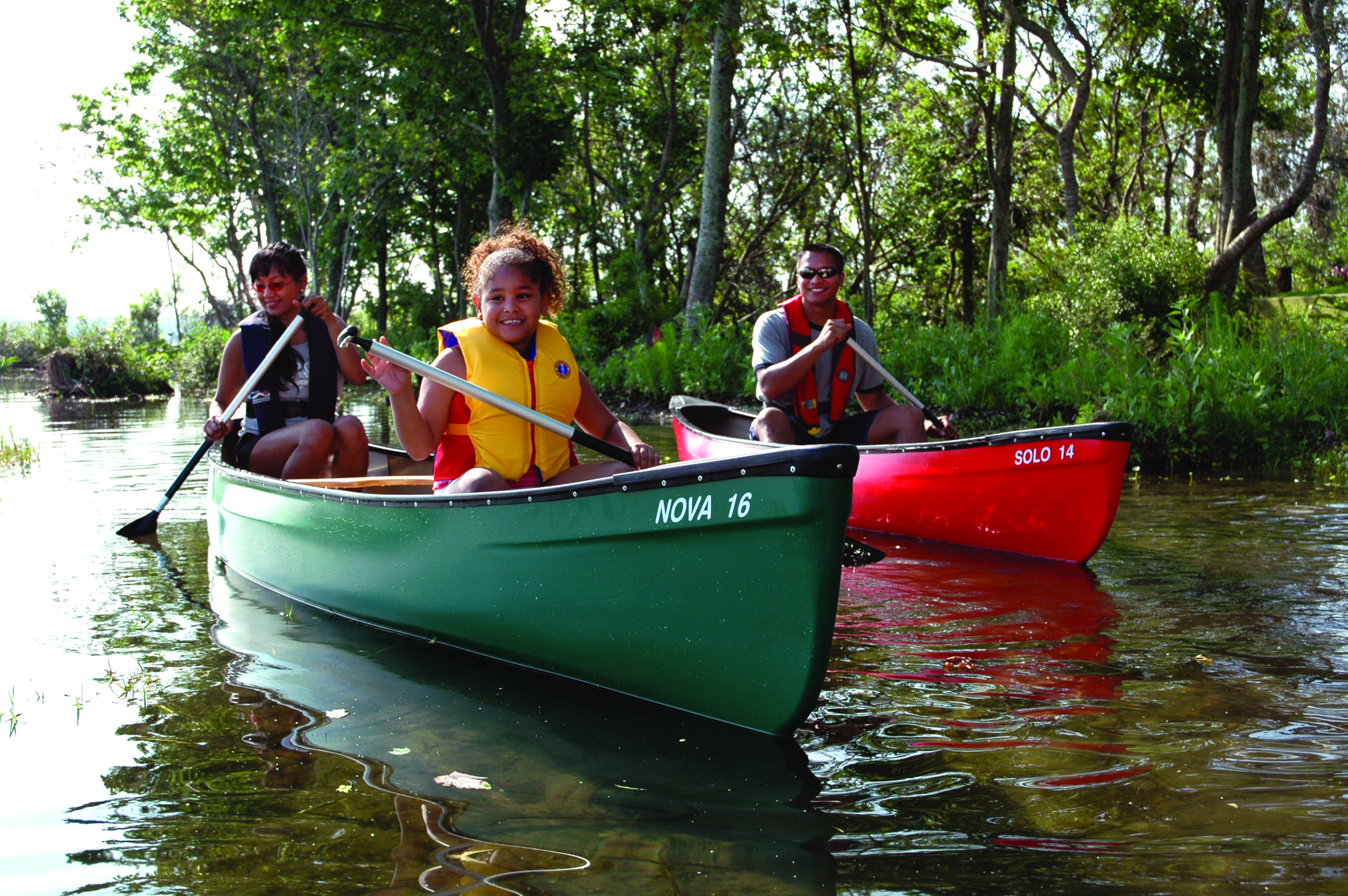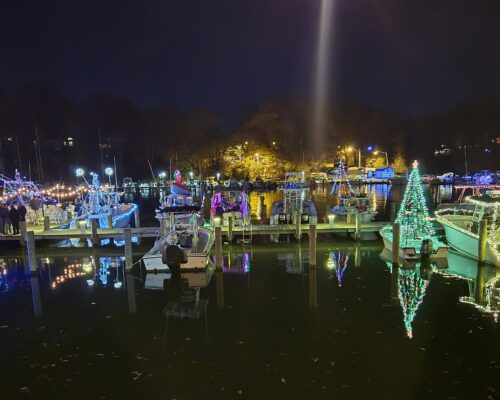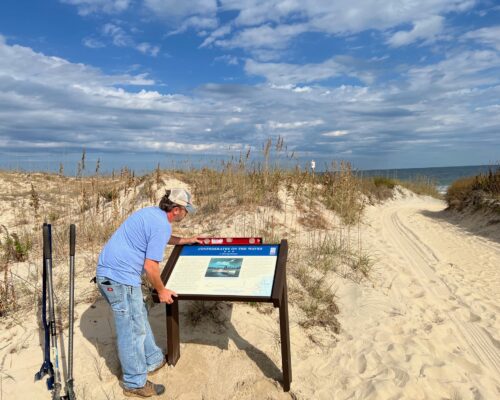Retired Maryland Bay Pilot First Class Bill Band brought ships in and out of the Chesapeake Bay for over 40 years, but nothing quite compares to the winter of 1977. Here, the author recounts some of the hardest parts of navigating ships on a frozen-over Bay.
1977. Few of us who lived in the Chesapeake Bay watershed that year will forget the bitterly cold winter that settled on the eastern part of the country. Forty-nine eastern cities reported record low temperatures. Snow fell as far south as Miami, Florida, and even Freeport, Bahamas.
Life came to a standstill for most of those who made their living on or around the Chesapeake Bay. Workboats were frozen in place at their docks, depriving watermen of their livelihood: crabs (still dredged during winter in those days) and oysters.
U.S. Coast Guard vessels broke ice through Hooper Strait and up the Wicomico River, escorting tugboats pushing fuel barges to Salisbury, Maryland. Smith and Tangier Islands were cut off from the rest of the world. National Guard helicopters flew in food supplies and fuel oil to stranded islanders. The news reported that the Chesapeake Bay was shut down.
Except it wasn’t. Not for the Bay pilots. From Dec. 24, 1976, through Feb. 28, 1977, there were hundreds of ship movements, and cold was the order of the day.
From the Bay Bridges south 100 nautical miles to Wolf Trap, navigational aids were nonexistent or useless. The weight of the ice, plus wind and tidal currents, pushed the buoys underwater or moved them markedly off station. Ice coverage on the Bay and its tributaries was almost 100%. Looking left or right, the view from a ship’s bridge was an expanse of gray or white, miles wide, shore to shore.

At Cape Henry, partly-submerged jagged blocks of drift ice moved with the current, adding danger to the smaller boats delivering pilots to and from their ships, particularly at night. In these conditions, a routine 10-hour transit on the Bay took upwards of 15 hours.
In 1977, the maximum draft for ships transiting the Bay for Baltimore was 39.5 feet. One dark night in early January, Bay pilot Captain Bill Anderson was approaching the eastern end of Rappahannock Channel on a loaded Exxon tanker, preparing to line up his course with the flashing buoys that would allow the ship to stay in at least 42 feet of water all the way to Baltimore.
However, he quickly realized that the buoys were grossly out of position. After conversing with the captain, Anderson decided to wait for daylight before attempting the channel. The crew attempted to anchor for the night. The 10-ton anchor was dropped from 10 feet above the water. It hit the surface of the ice and landed with a thud. It was startling to look over the bow and see the huge anchor lying atop the ice.
North of the Bay Bridges, ice 6 to 14 inches thick dominated the entire waterscape. On the Eastern Shore, particularly at Tolchester and Grove Neck, the ice was 1.5 to 2 feet thick. Rafting, where the prevailing northwest wind pushed the ice on top of itself, caused this condition.
The ice buoys placed by the Coast Guard for the winter season were anchored to the bottom with 12,700 pounds of concrete; however, it made little difference as the ice pushed the buoys under or dragged them out of position.
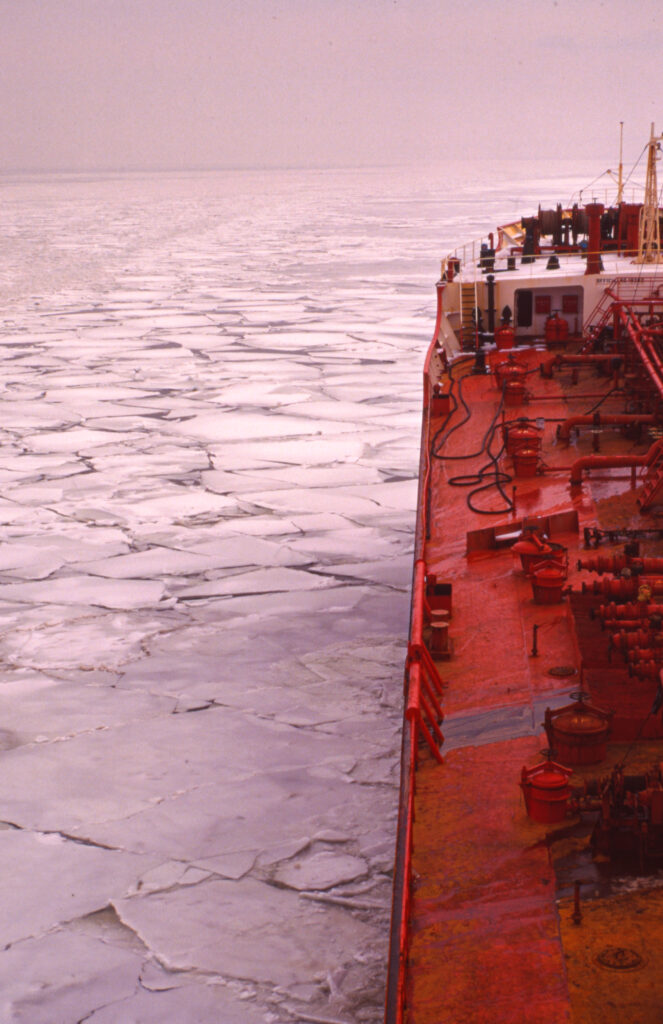
There was no GPS in 1977. Without buoys, pilots used radar range and bearing off specific points to navigate their ships. Just as importantly, the pilots employed their own ice marks, such as lining up a flagpole with the corner of a house, or a stand of trees with a dip in the land behind. This “old school” method was very effective in enabling the pilots to move ships when other mariners wouldn’t consider it.
Moving in heavy ice caused the ships to shudder from the effort, and the sound of crunching ice was cacophonous as it moved down the ships’ sides from bow to stern. Certain ships, particularly the Scandinavian-flagged, had reinforced bows for ice, and it was logical for other ships sailing out of Baltimore at the same time to follow astern of them. Engines overheating was not uncommon on ships as the ice clogged the cooling water intakes for the ships’ engines.
As the ice became heavier, and the lead ship was forced to a stop, the following ship used its momentum to hop-scotch around the broken ice, creating fissures around the hindered vessel and loosening the Bay’s icy grip. It was very close work, and the risk of collision was incessantly on the pilots’ minds. If stuck in the ice, the procedure was to back and fill, going from hard right to hard left with the ship’s rudder. At times it was necessary to wait for a tugboat assist, during which tugboats would break ice around the ship. But a call for tugboats meant hours of idle delay.
Each day of that winter, movement became increasingly difficult, particularly in the Upper Bay. On Feb. 2, the USCG Captain of the Port closed the Chesapeake and Delaware Canal to ship traffic due to heavy ice. However, Coast Guard vessels continued to escort tugboats with a minimum of 1,000 horsepower and their ever-important fuel barges through the Canal. It was long and tedious work. With the C&D Canal closed, ships could travel only north or south to Cape Henry on the Bay until Feb. 23, when the Canal was reopened to ship traffic.
In Baltimore Harbor, maneuvering a ship alongside its berth was demanding on the docking pilots and tugboats. For the two tugboat companies, Curtis Bay and Baker Whitely, it was necessary to use three or four tugboats to get a ship alongside the dock. Two tugs were used to push the ship towards its berth, while one or two more tugs broke ice between the ship and the dock, flushing the ice away with their propellers. The docking pilots boarded the ships from the tugboats, while the Bay pilots, fatigued from their 12-15 hours of navigation, remained on board for the two hours it took to get the ship alongside.
From Dec. 23 to Feb. 2, while the C&D Canal was still open to ship traffic, the ice made it impossible to transfer pilots at Chesapeake City via pilot boat. Normal practice would have the Delaware pilots and Maryland pilots exchanging control of their ships at this location, close to the state line. During this period the Maryland pilots would travel to Philadelphia by train or to the Delaware Capes by car and then board with the Delaware pilots. They, in turn, came to the Baltimore pilot office.
The anchorage off Annapolis created similar problems. Due to ice, the Annapolis pilot launch could not depart the city dock. Did that stop operations? No.
The solution was to board the ships by helicopter. On one occasion, three of us were being transported to the anchorage. The first two pilots were put aboard bulk carriers, which was straightforward, as there were no obstructions on the ships’ decks. My ship was a general cargo ship with masts and booms on either side of the cargo hatches. The crew had laid a wooden dunnage frame on one of the hatches to give the helicopter pilot a level place to land. As we approached the hatch, the downdraft from the helicopter blew the wooden platform into the Bay. My pilot said he would hover just over the deck for me to disembark. Skillfully he settled the chopper down without more than a couple of feet clearance between the rotor blades and the cargo masts on either side of the hatch. I cautiously stepped out of the craft feeling a bit like James Bond, 007.

There were some humorous moments in that formidable winter. Bay pilot Captain Jim Hannon boarded a Russian freighter at Dundalk Marine Terminal that was bound for the Canal and informed the captain of heavy ice on the Eastern Shore. A large ruddy faced man, he replied condescendingly with a heavy Russian accent, “Mr. Pilot, in America you have ice for the martinis. In Russia we have ICE!”
Two hours later they were stuck fast off Tolchester Beach. Taking in his surroundings, the captain declared, “This must be Russian ice!”
Bay pilot Captain Harry Prechtel was westbound on a Hellenic Lines ship and had what was probably the longest trip ever on the 40-mile journey from Chesapeake City to Baltimore…24 hours. He, too, was stopped by the ice off Tolchester Beach, and the Greek captain enquired how long they might be stuck. Capt. Prechtel pointed to the shoreline and said, “Captain, when you see daffodils growing over there, we can probably move.”
Not only was the Bay frozen, but the lack of heat on many of the ships would have been laughable—except that it wasn’t funny, particularly to unprepared crewmen from warmer climates. I boarded one ship at Cape Henry and was met by Chinese sailors who were wrapped in blankets over tattered jackets, wearing cloth gloves and threadbare head coverings. It was so cold inside the ship that the paint had fallen off the steel bulkheads in the passageways leading to the bridge. We walked through paint chips that were several inches deep.

Most ships had forced air heating systems, which were minimally effective as the air travelled to the bridge from the engine room many decks below. Sometimes this warmer air created a humidity problem whereby the moisture in the air froze on contact with the bridge windows. The pilot would resort to scratching out a pie plate sized opening to peer through while navigating a vessel 2 football fields in length (or larger). Some pilots brought along their own little space heaters, while others brought portable hairdryers to defrost the windows. Others rolled up nautical charts, attaching one end to the heating vents in the overhead and pointing the other end at the designated window for defrosting.
For personal warmth, a few pilots purchased refrigerator coats that were normally used in meat packinghouses. In those days it was unheard of to wear personal flotation devices. A fall into the water most certainly would have been fatal to anyone bundled up in such a manner.
That winter seemed unending, but end it did. On Feb. 23, the temperature rose to nearly 70° F and remained so for five days. The entire East Coast breathed a collective sigh of relief; however, this reprieve caused problems with ice breaking up and flowing out of tributaries in the watershed, causing ice jams in places. On the Bay, fog was present as the warm air mixed with the cold surface temperatures of the Bay waters. Nevertheless, spring was in the air.
In hindsight, for me it was a profound experience. It was recorded as the coldest winter since the formation of the Republic in 1776. A couple of memorable oddities were that Sharp’s Island Lighthouse (at the Choptank River entrance) was tilted 15° by the force of the ice, and that a large “floeberg” formed because of wind-generated lateral movement of ice in the shallower waters between North Point and Rock Hall in the upper Bay. This berg was 20 feet high, 40 feet wide and 100 feet in length. It never posed a hazard to shipping, but it was interesting to watch its development each time I passed by on a ship.
And so, this fierce season finally passed. Although we had other cold winters during my career, nothing quite matched the winter of ‘77.

